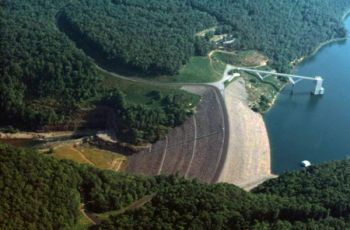Purposes of Dams: Difference between revisions
From ASDSO Dam Safety Toolbox
(Undo revision 6938 by Leby@gfnet.com (talk)) Tag: Manual revert |
No edit summary |
||
| Line 27: | Line 27: | ||
<noautolinks>==Best Practices Resources==</noautolinks> | <noautolinks>==Best Practices Resources==</noautolinks> | ||
{{Document Icon}} [[Hydrologic Engineering Requirements for Reservoirs (EM 1110-2-1420) | Hydrologic Engineering Requirements for Reservoirs (EM 1110-2-1420), USACE | {{Document Icon}} [[Hydrologic Engineering Requirements for Reservoirs (EM 1110-2-1420) | Hydrologic Engineering Requirements for Reservoirs (EM 1110-2-1420), USACE]] | ||
<!-- Revision history information --> | <!-- Revision history information --> | ||
{{revhistinf}} | {{revhistinf}} | ||
Revision as of 17:14, 10 July 2023
Dams serve a variety of purposes including water storage, flood protection, power generation, tailings storage, or recreation. The design of a dam is heavily influenced by its intended purpose; however, the purpose and hazard classification of a dam can change over the course of its design life due to changing water needs, and changes in the surrounding community or in site conditions. No matter the purpose of a dam, safety to the public is the number one priority over any potential benefits. Common purposes for which dams are constructed include the following:

|
| Gathright Dam in Virginia (Wikipedia) |
- Power Generation
- Water Supply & Regulation
- Recreation
- Flood Risk Management
- Irrigation
- Navigation
- Waste Management
- Environment
Best Practices Resources
![]() Hydrologic Engineering Requirements for Reservoirs (EM 1110-2-1420), USACE
Hydrologic Engineering Requirements for Reservoirs (EM 1110-2-1420), USACE
Revision ID: 7018
Revision Date: 07/10/2023
